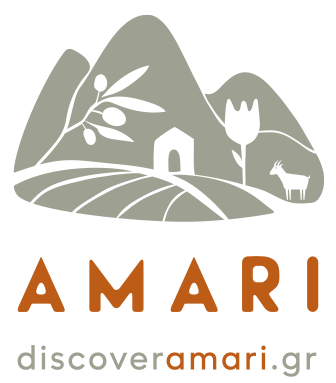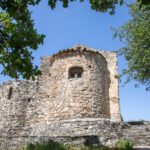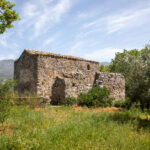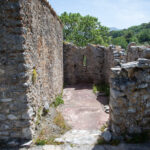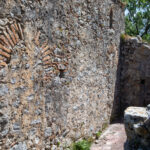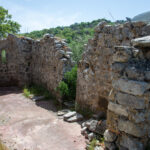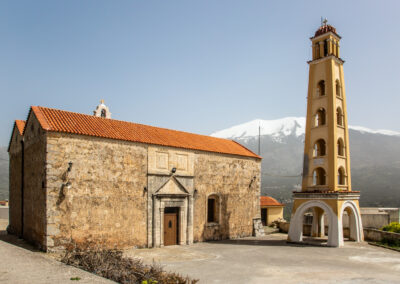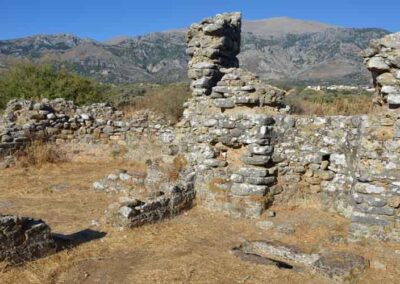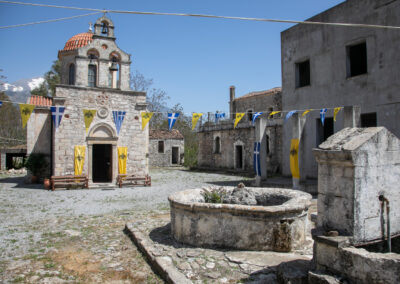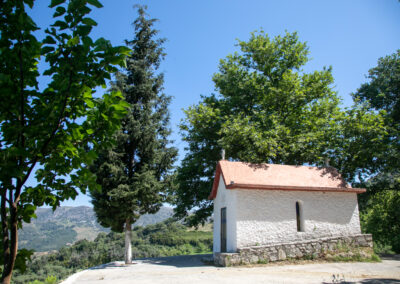Holy Church of Agia Anna (Amari)

Holy Church of Agia Anna (Amari)
The altered today, single-aisled church of Agia Anna, a short distance south of the settlement of Amari, is one of the best known in Crete, due to its very early dated few frescoes, in 1225, in the niche of the sanctuary. The temple was initially single-roomed, with a wooden roof, with a simple structure of the external surfaces. The eastern, southern, and western walls are preserved from the first phase. The northern one, with the characteristic sharp-pointed blind arches, was reconstructed at the beginning of the 14th century, probably after the earthquake of 1303, while the western part of the temple was reconstructed after another collapse. The south wall is built internally entirely of bricks and externally of common masonry with interpolation of shells. Its internal surface is shaped plastically by three carved arches, one of which is transparent and the others have been modified to a smaller size. Three, single-lobed, arched windows, high on the south wall, confirm that the church was originally timber-roofed. Few representations are preserved in the alcove of the sanctuary.
